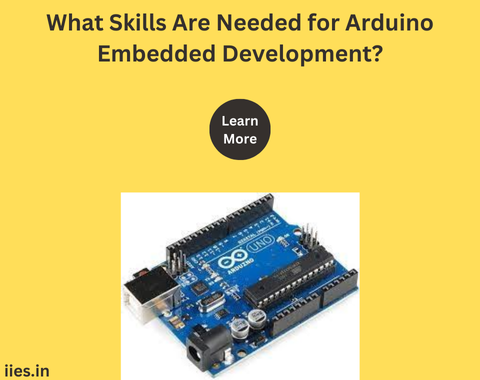
Arduino embedded development is a popular and accessible way to enter the world of electronics, programming, and the Internet of Things (IoT).
Whether you’re a hobbyist looking to create innovative DIY projects or a professional aiming to develop more complex systems, understanding the core skills needed for Arduino embedded development is crucial. This article will explore the essential skills required to succeed in this field.
Before diving into Arduino embedded development, it’s important to have a foundational understanding of electronics. This includes knowing how circuits work, understanding components like resistors, capacitors, transistors, and diodes, and being able to read and interpret circuit diagrams. You should also be familiar with the concepts of voltage, current, resistance, and power.
Key Concepts:
Arduino development is heavily dependent on programming. The Arduino platform uses its own programming language, which is a simplified version of C/C++. Therefore, having basic knowledge of programming, especially in C/C++, is essential.
Key Concepts:
The Arduino Integrated Development Environment (IDE) is the primary tool used to write, compile, and upload code to an Arduino board. Familiarity with this IDE is crucial for effective development.
Key Skills:
Arduino boards are powered by microcontrollers, which are essentially small computers on a single chip. Understanding the basics of how microcontrollers work, their architecture, and how they interface with peripherals is key to effective Arduino development.
Key Concepts:
Problem-solving is a core skill in any type of development, and Arduino is no exception. Whether it’s a hardware issue, a coding bug, or a project that isn’t functioning as expected, being able to systematically diagnose and fix problems is essential.
Key Skills:
Most Arduino projects involve interfacing with sensors and actuators to interact with the physical world. Knowing how these components work, how to connect them to an Arduino board, and how to program them is fundamental.
Key Components:
In many Arduino projects, your device will need to communicate with other devices, whether it’s another microcontroller, a computer, or an IoT cloud platform. Understanding communication protocols is crucial for such tasks.
Key Protocols:
Developing a project from start to finish requires careful planning and design. This includes defining the project requirements, selecting appropriate hardware, designing the circuit, writing the code, and testing the system.
Key Steps:
Arduino is often used in creative projects, ranging from interactive art installations to home automation systems. Creativity and the ability to think outside the box are valuable skills that can help you come up with unique solutions and projects.
Key Attributes:
Technology, especially in the realm of embedded systems and IoT, is constantly evolving. Staying updated with the latest advancements, tools, libraries, and best practices is crucial for ongoing success in Arduino development.
Key Strategies:
Arduino embedded development is a multifaceted discipline that requires a blend of technical skills, creativity, and a passion for learning. Whether you’re building simple projects or complex systems, mastering these skills will not only make you a proficient Arduino developer but also open the doors to more advanced fields in embedded systems, IoT, and beyond.
Indian Institute of Embedded Systems – IIES